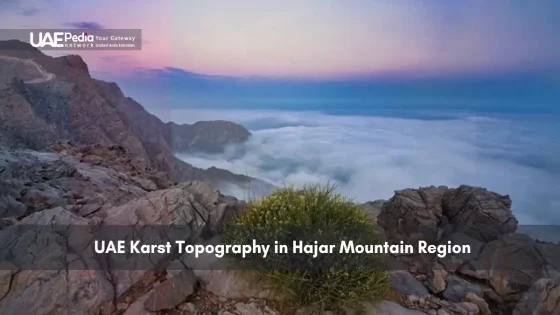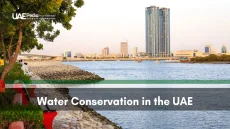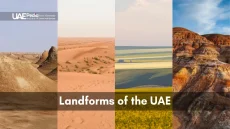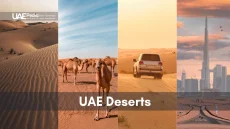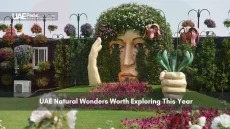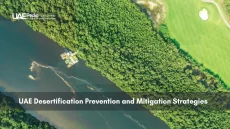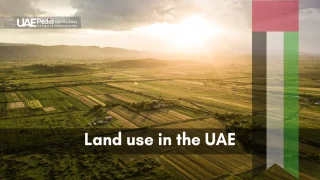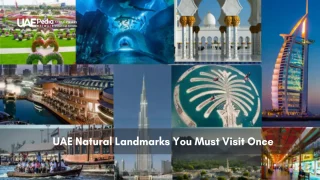Did you know a single hectare of salt-tolerant trees can store four times more carbon than a tropical rainforest? Along the Emirates’ shores, nature’s quiet warriors stand knee-deep in tidal waters—their tangled roots anchoring both ecosystems and climate solutions.
These coastal powerhouses shield communities from storms while absorbing greenhouse gases. Recent projects have added over 50,000 new saplings through precision planting campaigns. Conservation teams now track growth patterns using satellite tech, blending tradition with innovation.
Beyond environmental benefits, these habitats whisper stories of heritage. They’ve sheltered marine life for generations and inspired modern sustainability efforts. Their survival represents a bridge between ancestral wisdom and tomorrow’s green ambitions.
Here’s what you’ll discover:
— How natural wave-breakers reduce erosion while nurturing biodiversity
— Why carbon capture here outperforms rainforests acre-for-acre
— The tech revolutionizing restoration (think drones and real-time dashboards)
— Cultural ties transforming conservation into community-led action
The Value of UAE mangrove forests in the Ecosystem
Picture roots that breathe saltwater and leaves that sweat crystals—these resilient trees work double duty. While locking away atmospheric carbon, they simultaneously armor shorelines against nature’s fury.
Silent Carbon Vaults
Recent studies reveal something extraordinary: every acre here traps 1,000+ tons of CO₂—equivalent to 200 gasoline-powered cars driven annually. How? Their intricate root systems create oxygen-poor soil where organic matter decomposes slowly, storing carbon for centuries.
“Mangrove soil acts like a climate time capsule—what gets buried stays buried.”
| Ecosystem | Carbon Stored (tons/acre) | Storage Duration |
|---|---|---|
| Mangroves | 1,023 | 300+ years |
| Tropical Rainforest | 256 | 50-100 years |
| Seagrass Meadows | 198 | 150 years |
Living Breakwaters
These natural barriers reduce wave energy by 75%—a critical defense against coastal erosion. During 2017’s Cyclone Mekunu, protected shorelines saw 40% less damage than exposed areas.
Four key species thrive here:
- Hawksbill turtles nesting in root mazes
- Greater flamingos filtering brine shrimp
- Socotra cormorants diving for fish
- Endangered dugongs grazing on sea grass
In Abu Dhabi, the Jubail Island National Park demonstrates this synergy. Rangers report 23% faster sapling growth in zones with crab colonies—the crustaceans aerate soil while feeding on detritus.
As climate challenges intensify, these ecosystems transform from nice-to-have preserves into need-to-have infrastructure. Their tangled roots now anchor both marine nurseries and humanity’s fight against rising temperatures.
Understanding the Unique Dynamics of Mangrove Ecosystems
In the clash between land and sea, these trees rewrite survival rules. Their secret? A toolkit of biological hacks perfected over millennia—turning harsh conditions into thriving habitats.
Saltwater Survivalists
Mangroves play chess with the tides. When seawater floods their roots, specialized filters block 90% of salt. What slips through gets expelled through salt-excreting leaves—crystals glittering like tiny protest signs against harsh conditions.
Their roots pull double duty. Pneumatophores—those spiky snorkel-like structures—poke above mud to grab oxygen during high tide. Below ground, tangled networks stabilize soil while creating hideouts for crabs that aerate the earth.
“These trees don’t just endure saltwater—they weaponize it. Their adaptations create micro-habitats that ripple through entire food chains.”
Fisheries’ Hidden Heroes
Abu Dhabi’s crabbers and fishers know the truth: healthy mangroves mean full nets. Juvenile fish dart through submerged roots, gaining size safely before venturing into open waters. Shrimp populations here triple compared to barren coastlines.
Three community lifelines emerge:
- Seafood harvests supplying local markets
- Ecotourism ventures showcasing biodiversity
- Natural water filtration boosting nearshore catches
A 2023 study found villages near intact mangroves report 40% higher fishery yields. As climate change intensifies storms, these ecosystems become economic insurance policies—their roots gripping livelihoods as tightly as they anchor soil.
Innovative Restoration Initiatives and Community Engagement
Imagine drones humming like bees over tidal flats, dropping seed pods with surgical precision. This isn’t sci-fi—it’s how conservationists now revive coastal ecosystems. Teams blend satellite mapping with traditional knowledge, creating restoration blueprints that adapt to shifting tides and temperatures.
Science-Based Planting and Monitoring Techniques
Emirates Nature-WWF’s interactive dashboard—a climate command center—tracks sapling survival rates in real time. Sensors measure soil salinity, while AI predicts ideal planting windows. Field crews use biodegradable shelters to protect young trees during critical growth phases.
Three innovations drive success:
- LIDAR scans mapping underwater root networks
- Community scientists reporting growth via mobile apps
- Carbon credits funding expansion into new sites
“We’re not just planting trees—we’re engineering climate resilience. Every sapling becomes a data point in our fight against rising seas.”
Collaborations with Stakeholders and Public Awareness Efforts
Abu Dhabi’s coastal vegetation projects thrive through unlikely alliances. Hotel chains sponsor cleanup drives, while schools adopt mangrove nurseries. Corporate volunteers log 15,000+ hours annually, their boots sinking into nutrient-rich mud during planting festivals.
Key partnerships include:
- Fishermen guiding restoration zones to protect crab habitats
- Tech firms developing gamified awareness campaigns
- Universities studying carbon storage in sediment layers
These efforts prove environmental healing can be both high-tech and deeply human—a dance between satellites and community spirit.
Building a Resilient Future Through Mangrove Conservation
What if every sapling planted today could shield coastlines tomorrow? Across Abu Dhabi’s shores, decades of conservation work reveal an inspiring truth—these salt-tolerant guardians don’t just survive. They thrive, transforming challenges into solutions for communities and wildlife alike.
Mature trees here lock away carbon dioxide 20 times faster than young saplings. Their dense root networks—some older than skyscrapers—anchor entire ecosystems. In Jubail Island National Park, restored sites now shelter 60% more fish species than barren areas, proving nature’s comeback power.
Sheikh Zayed’s vision lives through annual events like World Mangrove Day. Families wade into tidal flats during planting festivals, their laughter mixing with seabird calls. Hotels host beach cleanups while schools track crab migrations—a mosaic of climate action where everyone plays a part.
Want to leave footprints that matter? Join volunteer drives monitoring water quality. Share #BlueCarbonHeroes stories online. Or simply visit protected sites to see how tangled roots calm storm surges and nurture biodiversity. Together, we’re writing the next chapter—one where resilient coasts mean thriving communities.
These salt-tolerant trees act as natural shields against erosion and storm surges while filtering pollutants. Their dense root systems create nurseries for fish like hamour and sheri, supporting local fisheries and biodiversity hotspots like Jubail Island National Park.
A single hectare can absorb up to 1,000 tons of CO₂ over 20 years—four times more than rainforests! Projects like the Emirates Nature-WWF partnership track blue carbon stocks, turning preserved forests into climate action powerhouses.
Absolutely! They’ve evolved to filter up to 90% of seawater salt through their roots. Some species excrete excess salt through their leaves, thriving in tidal zones where freshwater meets the Gulf’s warm shallows.
Teams use drones to map ideal planting sites and monitor growth via satellite. Community-driven planting events—like Dubai’s “Adopt a Mangrove” initiative—combine tech with hands-on action, ensuring saplings survive shifting tides and temperatures.
Kayak through Abu Dhabi’s Eastern Mangroves with outfitters like Noukhada, who follow strict no-waste policies. Avoid disturbing nesting birds, and join guided tours that fund conservation—turning your adventure into direct ecosystem support.



